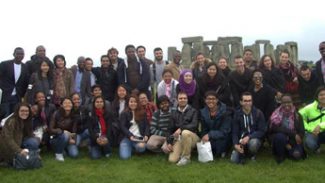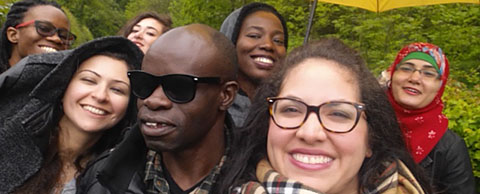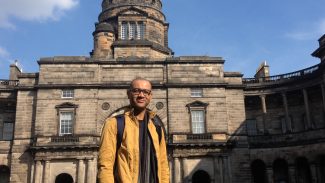On 1 May, Chevening Scholars immersed themselves in some of the best and most beautiful medieval bits of Britain with a trip to Fountains Abbey and York. Read what Chevening Scholar Merybell Nabilah Reynoso, who is currently doing a master’s degree in international development at the University of Edinburgh, had to say about this historical day.
The clock struck 09:45 on what turned out to be a foggy and rainy Friday morning in York, a city in the north of England. Chevening Scholars gathered in the Memorial Gardens before heading off to Fountains Abbey, one of England’s largest and best preserved ruined Cistercian monasteries.
This amazing building is located about three miles southwest of Ripon in North Yorkshire. Although it may seem far from the city centre, it is definitely worth the visit. The view is unbelievable and we got to wander through this UNESCO World Heritage Site with a tour guide, which made the experience even more meaningful as we learned more about the history of Yorkshire.
Fountains Abbey, founded in 1132, operated for over 400 years until 1539 when King Henry VIII (you’ve probably heard of him as the King that broke ties with Rome and the Pope) ordered the dissolution of monasteries.
After some refreshments and lunch, we went on a guided tour through the University of York and the city centre, including the marvellous York Minster, the largest gothic cathedral in northern Europe.
I confess that during the tour, I got a ‘wee bit’ lost and separated from the group. However, I found the small, iconic Caffé Concerto, which allowed me to embrace the local Yorkshire scene while travelling in time through Nina Simone’s music, confirming that ‘not all those who wander are lost.’
York was a nice break from dissertation stress, and a wonderful opportunity to meet scholars from Argentina, Kenya, and Swaziland (just to name a few!)





